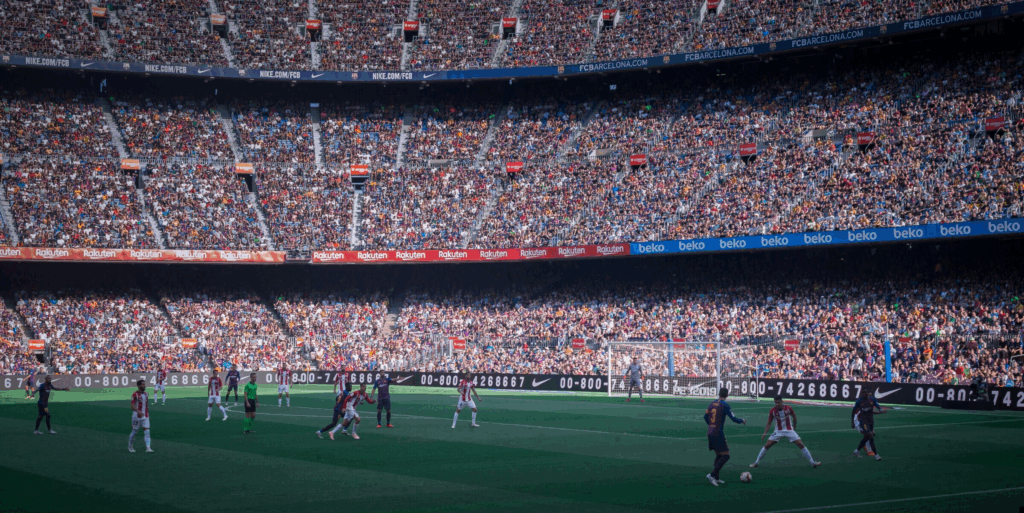How heavy lifting shapes maximal aerobic speed and soccer fitness (part 2 here and part 3 here)
Why talk about strength in an “aerobic” sport?
In short, because it is underrated by too many people, even marginalized. There are too many athletes and coaches at the high school level that don’t understand how important it really is in soccer. Imagine being able to get a 20% improvement in endurance AND a speed boost without additional conditioning or mileage run…would you take that trade?
I sure hope so. That’s why talking about strength for endurance sports is important – many people don’t know that’s possible.

This isn’t a jab at team coaches either. They know the importance of performing well at the end of a game when everyone is tired. But without the physiology knowledge that a strength and conditioning specialist brings, many well-meaning coaches end up chasing conditioning “fitness” and literally running the explosive qualities right out of their athletes.
Slower athletes mean less late-game success, so the sport coach doubles down on conditioning in an attempt to get the team more fit, and the cycle repeats itself.
In the worst case scenario, this also means more injuries to the team as over-trained and under-recovered athletes struggle to keep good mechanics. So not only are they slower, they’re more fragile. Clearly this is the opposite of what everyone wants.
The two drivers of aerobic performance
There are two physical traits that drive all of aerobic performance. These are VO₂ max and maximal aerobic speed.
Endurance training is a huge subject, but pure aerobic performance basically comes down to those two attributes. You have to have both if your sport requires true aerobic endurance. Here’s how they relate:

VO₂ max defines how big an athlete’s aerobic engine is. How much capacity it has. Sometimes called “maximal aerobic capacity”.
Maximal Aerobic Speed (MAS) defines how fast that engine can propel the body. How well tuned it is.
O₂ cost per meter run is the key. It’s the missing ingredient, the overlooked factor.
VO₂ max gets all the glory in popular writing, but it’s only half the story. You can have all the oxygen capacity in the world, but it won’t matter if every meter you run costs you a fortune.
The Problem
The “cost per meter” issue is what many sport coaches miss – and it’s what keeps athletes slow. This is what strength training and true speed training directly affect.
To improve speed – aerobic or otherwise, it doesn’t matter – you need to improve force output, not VO₂ max. You need to improve the power and reduce the oxygen cost of each step taken.
Spending so much time on conditioning or “fitness” while ignoring strength/speed disregards the biggest driver of game speed. Conditioning is very important, but it is also very quick to improve if an athlete already has speed and strength. The reverse is not true for team sports athletes.
This is also why top coaches try to recruit speedy players – it’s easier to make a fast person conditioned than a conditioned person fast. Why? Because strength and speed take exponentially more time and focus to improve. That recruiting focus may work for college and national level teams, but it doesn’t help a young developing athlete who is trying to get faster, actually get faster. You have to know how to train the body to produce speed.
What’s more, methods to improve aerobic capacity (VO₂ max) are do not improve MAS as effectively as strength training does for developing athletes. They’re nowhere close, actually.
Take Home Message
Unfortunately, many teams and athletes confuse “hard conditioning” workouts with actual speed training and see strength as optional. Strength is a key driver of endurance, speed, and injury resilience. It’s one of the most effective, overlooked ways to make every stride faster, more repeatable, and metabolically “cheaper”.
Sometimes a coach or athlete is so afraid of “being out of shape” that they never focus on strength and speed to begin with. More often they pay it lip-service but never commit to really getting better, because it scares them to do something different. After all, conditioning and mileage got them to the level they’re at today successfully. The catch? What gets you to the next level is almost never the same thing that got you to your current position.
The result, sadly, is a slow athlete that is prone to injury. If you’re not confident in your ability to train strength and speed effectively, hire a coach with the knowledge. Don’t waste your limited off-seasons repeating old mistakes.
In part two, I’ll dissect strength training’s effect on VO₂ max and maximal aerobic speed. (Update: read it here).

